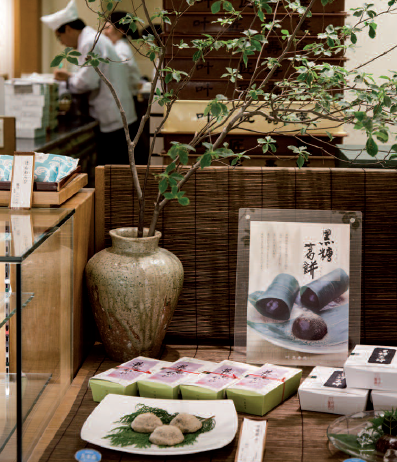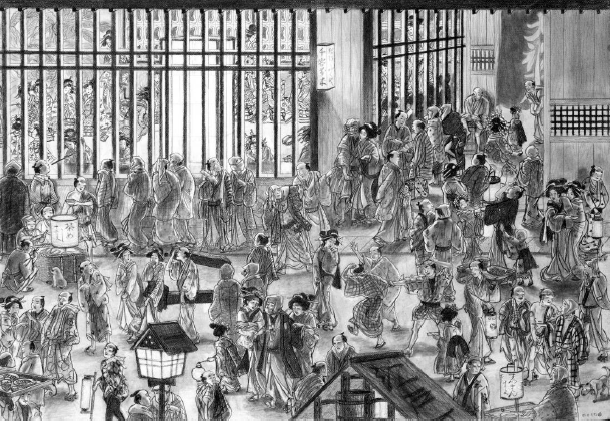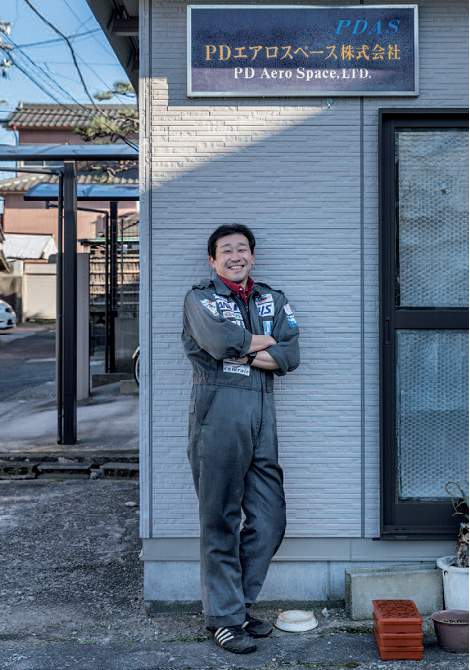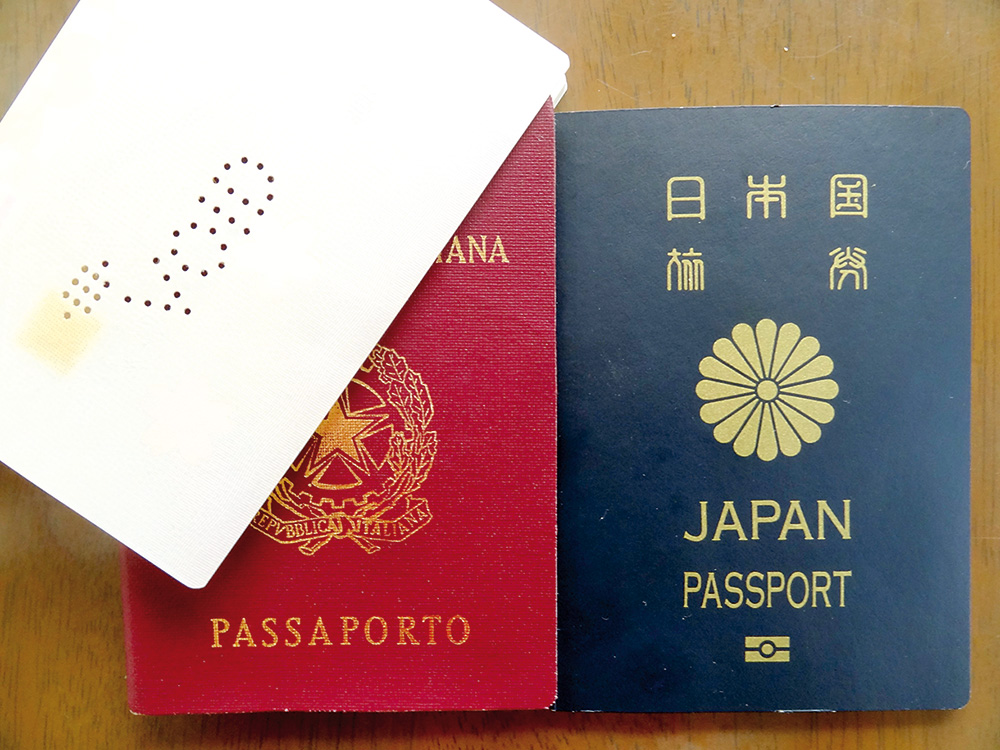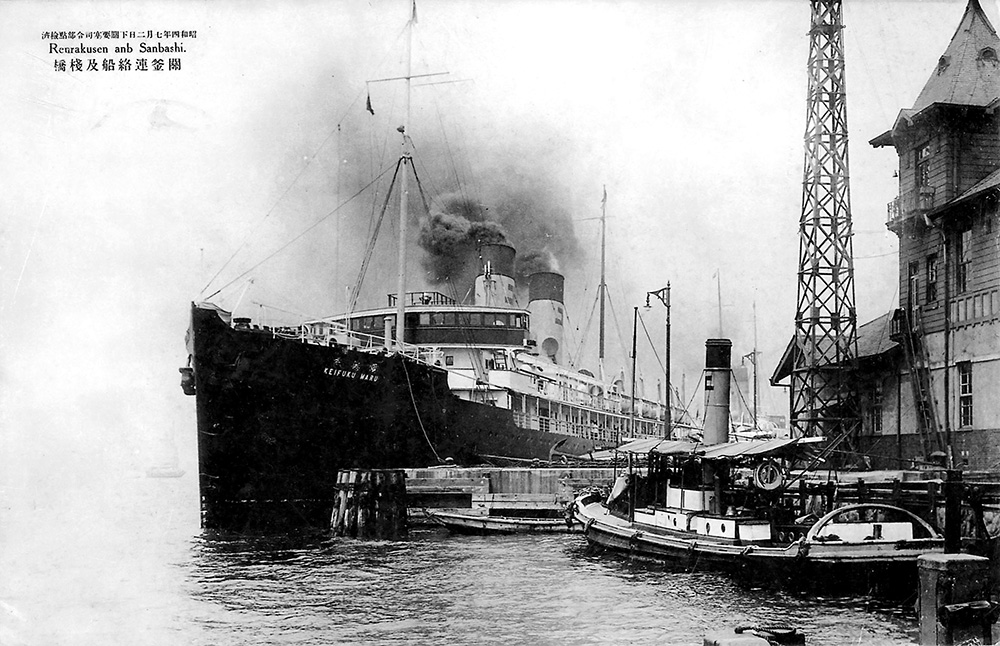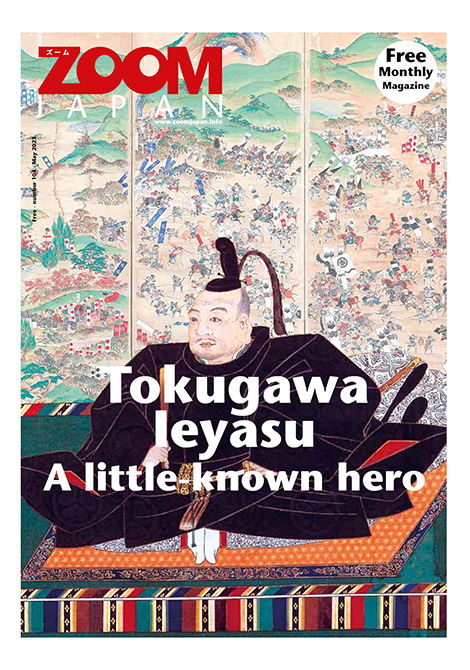
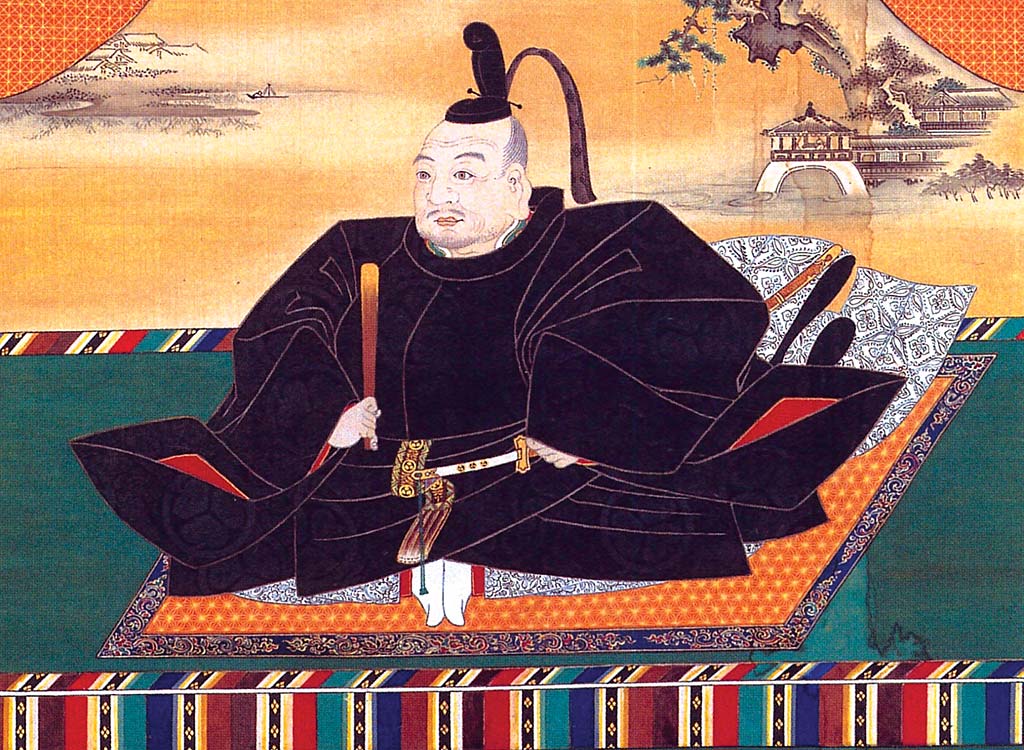
To coincide with NHK’s drama series broadcast in his honour, here is a detailed portrait of Tokugawa Ieyasu.
T okugawa Ieyasu, a feudal lord who brought peace to Japan at the beginning of the 17th century after ending 150 years of continuous civil wars and social upheavals, and whose shogunate (hereditary military dictatorship) regime lasted until 1868, is one of the country’s more successful yet misunderstood historical figures. However, recent research has cast a new light on Ieyasu, his life and legacy. Zoom Japan talked about the founder of the Tokugawa dynasty with Mayama Tomoyuki, an award-winning writer and researcher of famous historical figures who published Nanikato Ningen-Kusai Tokugawa Shogun (The All-Too-Human Tokugawa Shoguns), in 2022.
What kind of person was Ieyasu, and why do a lot of people in Japan seem to prefer Oda Nobunaga and Toyotomi Hideyoshi, the two feudal lords who started the process of unification and pacification?
Mayama Tomoyuki : Nobunaga was a sort of revolutionary, he wanted to change things and create a new status quo. He was bold and very aggressive. He had a unique kind of intensity which is not very common in Japanese people. I think people are attracted to that kind of single-mindedness even now. Then there is Hideyoshi, who was a commoner. He came from a peasant family yet became one of Nobunaga’s retainers and then, when Nobunaga was killed, replaced him as the most powerful man in Japan. They both led inspiring lives capable of kindling people’s imaginations.
Ieyasu, on the other hand, has always been portrayed as a simple, uninspiring person who merely took advantage of the opportunities offered to him. For example, he formed an alliance with Nobunaga, but never betrayed him and was simply content with being his junior partner. He never made any decisive or daring attempts to grab power. Even following Nobunaga’s death, he just continued to build up his position, biding his time for the right opportunity to arise. As a leader, he is a boring figure, hardly a pop culture character, which is why he has attracted few admirers. At least, until now with the recent historiographical revisions.
In order to understand Ieyasu, you need to understand the Sengoku (warring states) period. What can you tell me about the 150 years that preceded the Togukawa regime?
M. T.: It was a time when the power of the central government was greatly weakened. Imperial authority was waning and the power of the shogun had also been significantly diminished by centrifugal forces. During these times, the whole of Japan was being torn apart. Individual feudal clans were in control of different regions and they each had aims to increase their autonomy or extend their dominance over other parts of the country. In that sense, Japan was also a place that offered opportunities to those who had the strength and courage to struggle to the top. That is why the Sengoku period is so popular and is often featured in popular culture. It is full of romantic depictions and awe-inspiring warlords. It is easy to empathise with them. Studying this period is like reading a story full of twists and turns where you never know what’s going to happen next. I do not think I would want to experience it myself (laughs), but it was undoubtedly an exciting time.
It is said that during the Sengoku period you could never let your guard down, even when dealing with your allies. What was Ieyasu’s relationship with both his allies and enemies?
M. T. : The Sengoku period is such a chaotic series of events, battles and deaths that Ieyasu’s allies and enemies kept changing all the time, so he constantly had to think about what kind of choices he should make amid all that chaos. One case in point is his relationship with Honda Masanobu. Masanobu’s father had served Ieyasu’s family, but when a league of monks, samurai and peasants rebelled against Ieyasu in 1564, Masanobu sided against him. It is not clear how much damage Ieyasu suffered from the rebellion, but the interesting thing is that he welcomed Masanobu back after some time, like a sort of prodigal son, and when the Edo shogunate was established in 1603, he became an indispensable aide. There is a phrase to describe Ieyasu’s three favourite things: “Sado-dono, Taka-dono, Oroku-dono”. “Takadono” refers to Ieyasu’s favourite pastime, falconry; “Oroku-dono” refers to Oroku, one of his concubines; and “Sado-dono” is Honda Sado-no-Kami Masanobu.
It is said that during the Sengoku period you could never let your guard down, even when dealing with your allies. What was Ieyasu’s relationship with both his allies and enemies?
M. T. : The Sengoku period is such a chaotic series of events, battles and deaths that Ieyasu’s allies and enemies kept changing all the time, so he constantly had to think about what kind of choices he should make amid all that chaos. One case in point is his relationship with Honda Masanobu. Masanobu’s father had served Ieyasu’s family, but when a league of monks, samurai and peasants rebelled against Ieyasu in 1564, Masanobu sided against him. It is not clear how much damage Ieyasu suffered from the rebellion, but the interesting thing is that he welcomed Masanobu back after some time, like a sort of prodigal son, and when the Edo shogunate was established in 1603, he became an indispensable aide. There is a phrase to describe Ieyasu’s three favourite things: “Sado-dono, Taka-dono, Oroku-dono”. “Takadono” refers to Ieyasu’s favourite pastime, falconry; “Oroku-dono” refers to Oroku, one of his concubines; and “Sado-dono” is Honda Sado-no-Kami Masanobu. Quite understandably many people wonder how Ieyasu could put his trust in someone who had once fought against him. But he was a master of psychology and all his life he followed the principle that “yesterday’s enemy is today’s friend”. Indeed, Ieyasu and Masanobu became lifelong friends and partners.
Speaking of alliances, what kind of relationship did Ieyasu have with Nobunaga, and why did he remain loyal to him for more than 20 years?
M. T.: Their relationship started early. Ieyasu was abducted by the Oda family when he was only five years old and held hostage. After growing up and establishing himself as a feudal lord, he and Nobunaga were on an equal footing at first, but as Nobunaga steadily expanded his power, it became clear that there was a hierarchical relationship between them. At a certain point, Nobunaga even murdered Ieyasu’s wife and children but, as one of his retainers, Ieyasu had no choice but to obey his orders. I think that there was a part of him that wanted to get revenge and gain more power, but he understood very well that at that particular moment he stood no chance against Nobunaga. In any case, though they were not friends and never completely trusted each other. But, they could of course see how they might use their alliance to their advantage. Ieyasu, for example, embarked on the suppression of the monks’ rebellion with Nobunaga’s approval. Nobunaga was busy fighting other feudal lords and wanted to be sure that Ieyasu would not interfere. So their alliance meant that each of them could concentrate on their own battles.
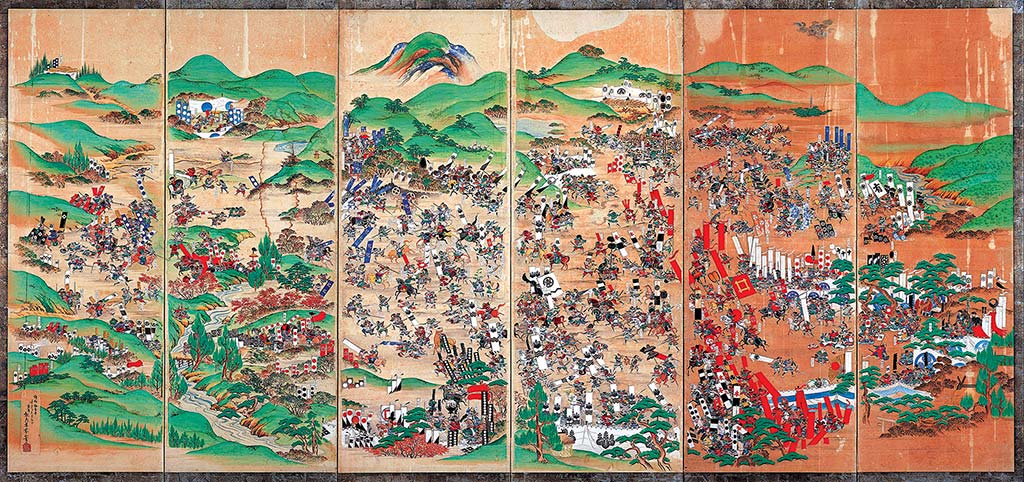
Ieyasu is generally seen as someone who continually endured all kinds of adversities and had enough patience to wait for the moment when those who were stronger than him were out of the way and he could grab the opportunity to seize power. However, according to recent studies, he was actually quite aggressive in seizing opportunities. What are your views on this?
M. T.: He certainly had a rough start, what with being kept as a hostage when he was a child and growing up in captivity away from his family. I guess those circumstances teach you to be patient and not do foolish things. On the other hand, he was always ready to strengthen his position whenever the opportunity arose and escape the control of other people. That is what happened in 1561, for example, when Ieyasu openly broke away from the Imagawa clan that he was forced to serve at that time. Soon afterwards, he captured the fortress of Kaminogo and after briefly fighting against Nobunaga, he became his ally. They were really dangerous years for someone like Ieyasu who was not strong enough to fend for himself without a powerful ally. It would have been hard to know which side to support. But in the end he did very well, always choosing the right moment to make his next decision. In any case, although endurance might have been one of his better qualities, it is hard to make a change by just being patient. So on the one hand, Ieyasu’s mentality is very Japanese, following his superiors and being loyal and all that. On the other hand, he is a leader in the making; not as daring and hard-headed as Nobunaga, but in the end more astute and successful. It is as if he is telling us: even if you cannot be like Nobunaga or Hideyoshi, you can become like Ieyasu.
Are you watching the NHK drama series on Ieyasu’s life?
M. T.: Yes, every week.
You have done a lot of research on Ieyasu and can judge the drama both from an academic point of view and as a fan. What do you think about this production?
M. T. : I like it, and even though they have come up with some pretty bold interpretations, I get the impression that they have not ignored the facts. They have done their homework.
Matsumoto Jun plays Ieyasu. Do you think he was a good choice?
M. T. : One of this drama’s purposes seems to be to change the traditional image of Ieyasu. We know more about his later years when he became a shogun and then retired after passing on the reins of power to his sons, but we do not know much about what he was like when he was young. In this respect, I think they have done an excellent job in portraying his early, formative years and how he developed his skills and sense of judgment. When you think about it, if you are strong and have everything fom the very beginning, you are seen as a sort of superhero, and it is difficult to relate to such a person. But young Ieyasu is weak and has to go through a growing process to become strong. Even in present-day Japan, I think many people feel that they are weak and can only improve their situation little by little. So, in that sense, they can relate to Matsumoto’s nuanced acting. The message the viewers get is that even if you are in a difficult situation and feel like running away, you should persevere and do your best. I also found that this time around, family relations and human conflicts are depicted in much greater detail than NHK has ever attempted before. Maybe history fans would like the narration to be a little cooler, a little more detached, but that is just my opinion. As a story of growing up and coming to terms with who you are, I think it is very interesting.
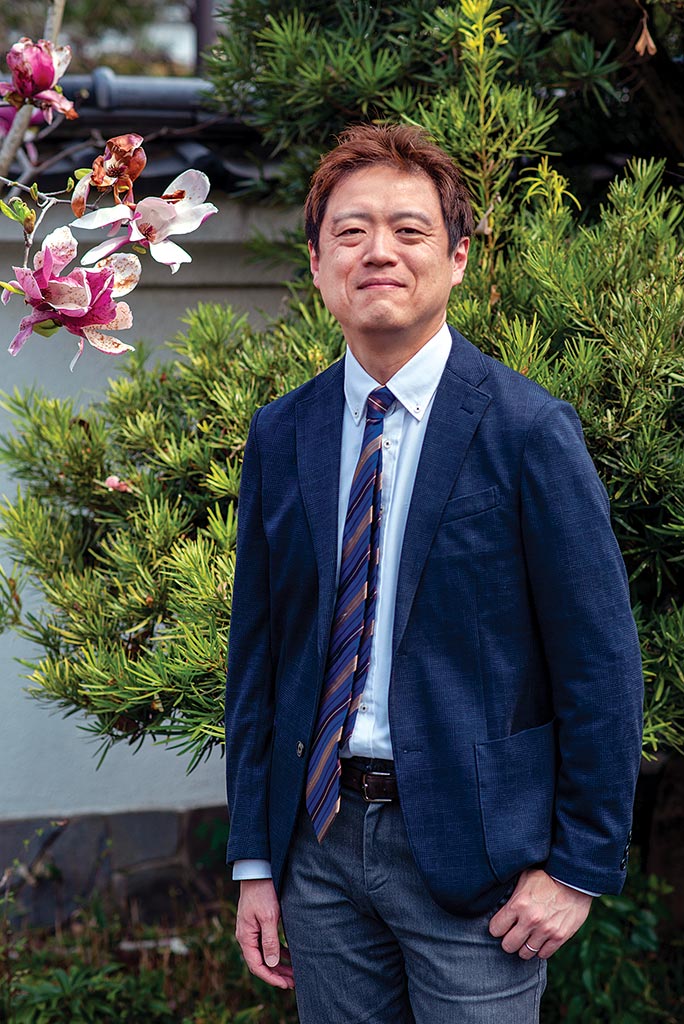
What was Ieyasu’s influence on his children? What values did he pass on to them?
M. T.: Not surprisingly, he taught them to be prudent and always to aim to establish a stable government. They learned fast. His third son, Iemitsu, made all sorts of samurai laws and regulations. Most crucially, he created the sankin kotai system under which feudal lords had to move back and forth between Edo and their own territories every other year. Even when they left Edo, their wives and children had to live permanently in Edo, a bit like political hostages. Because the daimyo (feudal lords) had to bear the cost of travel from their own territory to Edo as well as their living expenses in Edo, each domain had a financial burden that prevented them from accruing too much wealth or power. Being prudent, of course, does not mean being inactive. Indeed, Ieyasu’s motto was “Hurry up slowly”. He understood that when it came to the big decisions in life, you should not rush, but at the same time, you should not miss an opportunity when it presents itself. And in Ieyasu’s case, it was not just about his own life. As the head of the Tokugawa clan, he had to make decisions affecting the fate of his vassals and their families as well as his own. The last important thing that Ieyasu taught his descendants was that being a leader does not mean that one must be disliked. Indeed, all his life he preferred to rule in a style that attempted to avoid generating as much antipathy towards the ruler as possible.
Interview by Gianni Simone



